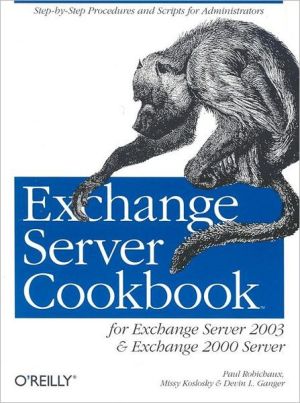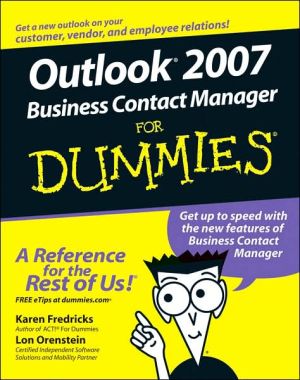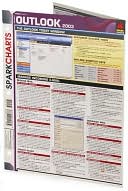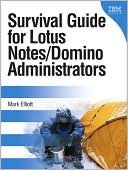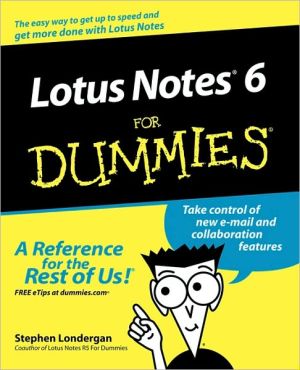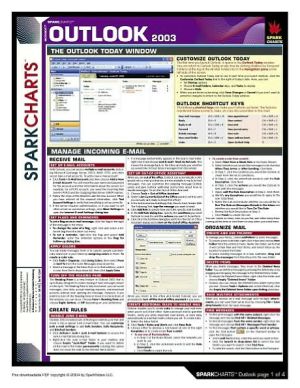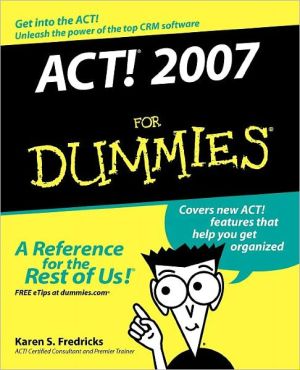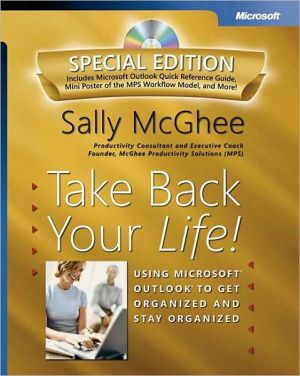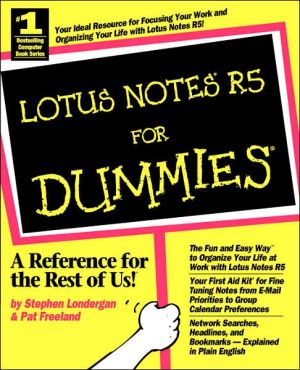Exchange Server Cookbook
Ask network administrators what their most critical computer application is, and most will say "email" without a moment's hesitation. If you run a network powered by Windows 2000 or Windows Server 2003, Microsoft Exchange occupies much of your time. According to Microsoft, 110 million Exchange seats have been deployed, but 60% of you are still running Exchange 5.5. That's a problem, because the difference between version 5.5 and the more efficient Exchange 2000 and Exchange Server 2003 is...
Search in google:
Ask network administrators what their most critical computer application is, and most will say "email" without a moment's hesitation. If you run a network powered by Windows 2000 or Windows Server 2003, Microsoft Exchange occupies much of your time. According to Microsoft, 110 million Exchange seats have been deployed, but 60% of you are still running Exchange 5.5. That's a problem, because the difference between version 5.5 and the more efficient Exchange 2000 and Exchange Server 2003 is profound. Don't fret. "Exchange Server Cookbook" offers you a comprehensive how-to guide to these newer versions of Exchange. You'll find quick solutions for the most common tasks you need to perform--everything from installation and maintenance to configuration and optimization, with proven recipes for the most useful tools and utilities. The book also has solutions to some uncommon tasks (that you may not know are possible) and advanced procedures that aren't part of day-to-day operations. These include tasks for critical situations, such as using a recovery storage group. Our reliable desktop reference even shows you how to write scripts for Exchange management and deployment tasks. That's right. While not every Exchange job can be scripted, many can, and we provide lots of working VBScript examples for accomplishing particular goals. Whatever your particular need, you'll find it quickly, because chapters in this Cookbook are laid out by recipe, with cross references to other pertinent solutions in the book. With this guide, you'll learn: The relationship between Exchange and Active Directory When to use the GUI, the command line, or scripting How to prepare forests, domains,andservers How to use Group Policy to control Exchange Diagnostic logging, measure performance, and administrative privileges Recipient management: user accounts, mailboxes, mail-enabled groups Mailbox and public folder database management Message routing and transport functions Security, backup, restore, and recovery operations For every question you have about Exchange 2000 or Exchange Server 2003, our Cookbook has the answer--one that you can find and implement without a moment's hesitation.
1Getting started12Installation and infrastructure113Active directory integration494Exchange server and organization management755Recipient management1056Mailbox and public folder database management1697Transport, routing, and SMTP2048Client connectivity2629Public folder management31710Exchange security35311Backup, restore, and recovery389
\ From Barnes & NobleThe Barnes & Noble Review\ This is the most comprehensive collection of Microsoft Exchange 2000/2003 solutions you’re likely to find. \ The authors cover every facet of running Exchange: installation and configuration; AD integration; monitoring and performance measurement; managing recipients, mailboxes, and public folders; controlling message routing and transport; handling Outlook and other client connectivity; backup, restore, recovery; and especially security.\ Want to check when your Exchange evaluation version is going to expire? Automate deployment? Troubleshoot DSAccess topology discovery? Bulk-add mailboxes from an Excel worksheet? Limit who can send mail to a distribution group? Create a routing group, and designate a routing group master? Recreating the old Schedule+ Free/Busy folder? Look it up here, and do it, fast. Often, there are multiple solutions: command-line, GUI, and carefully explained VBScript. You’ll wish you could find these authors and give them a hug. Bill Camarda, from the August 2005 Read Only\ \ \
